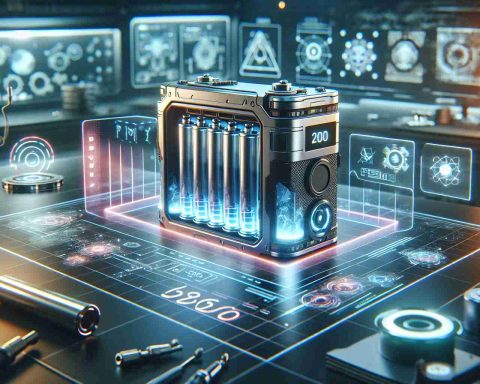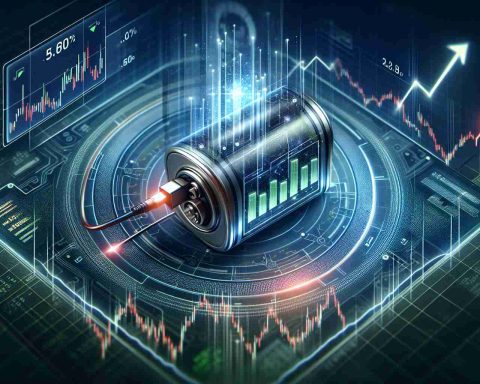Major Development in Electric Vehicle Manufacturing
In a groundbreaking move, the Department of Energy has finalized a $7.5 billion loan aimed at boosting electric vehicle battery production in Indiana. This funding is directed towards StarPlus Energy, a collaboration between Samsung SDI, a leading South Korean technology firm, and Stellantis, a major global automotive manufacturer known for iconic brands like Jeep and Dodge.
The loan will facilitate the construction of two state-of-the-art lithium-ion battery cell and module manufacturing facilities located in Kokomo, Indiana. These new plants are expected to significantly enhance the supply of battery components necessary for electric vehicles, aligning with the growing demand for eco-friendly transportation alternatives.
Stellantis emphasized the importance of this initiative, highlighting that the facilities will produce batteries locally in the U.S., ultimately contributing to clean and efficient mobility options for consumers.
Remarkably, the Department of Energy’s Loan Programs Office completed this loan agreement in a record time of just 15 days, setting a new standard for expedition in the processing of conditional proposals. In comparison, the average timeframe for finalizing loans in this sector typically spans 221 days, showcasing the urgency and importance of advancing electric vehicle technology in America’s automotive landscape.
Revolutionizing Electric Vehicle Production: A $7.5 Billion Investment in Battery Manufacturing
Major Development in Electric Vehicle Manufacturing
The U.S. Department of Energy’s recent $7.5 billion loan marks a significant leap forward in enhancing electric vehicle (EV) battery manufacturing capabilities in the United States. Directed towards StarPlus Energy, a joint venture between the South Korean tech giant Samsung SDI and global automotive leader Stellantis, this funding aims to bolster the production of lithium-ion batteries essential for EV performance.
# Key Features of the New Manufacturing Facilities
The initiative involves constructing two advanced manufacturing plants in Kokomo, Indiana, which are poised to become critical hubs for battery cell and module production. This development is part of a broader strategy to localize the supply chain for electric vehicle components and reduce reliance on overseas manufacturers.
– Location: Kokomo, Indiana
– Type of Production: Lithium-ion battery cells and modules
– Partners: Samsung SDI and Stellantis
# Pros and Cons of the Initiative
Pros:
– Enhanced Local Manufacturing: Producing batteries domestically minimizes supply chain risks and leads to faster delivery times for automakers.
– Job Creation: The new facilities are expected to create thousands of jobs, contributing to local economies.
– Environmental Impact: Increased battery production aligns with the global push for cleaner energy alternatives and reduced carbon emissions.
Cons:
– Investment Risks: While the initial investment is substantial, any potential delays or mismanagement could hinder the economic benefits.
– Market Saturation: As more manufacturers invest in battery production, the market could become saturated, affecting prices and profitability.
# Market Insights and Trends
The rapid approval of this funding—finalized in just 15 days—highlights a significant shift in how government loans are facilitated for renewable energy projects. Historically, such approvals could take an average of 221 days. This accelerated process reflects the urgent need for infrastructure improvements in the EV sector and the growing recognition of electric vehicles as vital to meeting climate targets.
# Innovations in Battery Technology
As the demand for electric vehicles surges, innovations in battery technology continue to evolve. The investment in Kokomo will leverage cutting-edge manufacturing techniques aimed at improving battery efficiency, longevity, and safety. Some anticipated innovations may include:
– Higher Energy Density: Developments that enable more energy to be stored in smaller cells.
– Faster Charging Times: Innovations that reduce charging time for consumers.
– Improved Sustainability: Research into recycling old batteries and using more sustainable materials in new battery products.
# Predictions for the Future
With the establishment of these state-of-the-art facilities, experts predict a doubling of the U.S. market share in lithium-ion battery production by 2025. This move not only positions the U.S. as a leader in the EV battery industry but also stimulates competition among global players in battery technology.
# Conclusion
The significant investment in battery manufacturing is a game-changer for both the automotive industry and the environment. As companies like Samsung SDI and Stellantis take proactive steps to localize battery production, the U.S. is set to make strides toward a cleaner and more sustainable transportation future.
For more information on the electric vehicle revolution, visit the Department of Energy.












